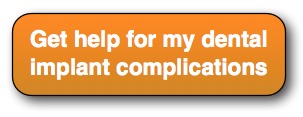 Why would anyone want to have a perfectly healthy dental implant removed?
Why would anyone want to have a perfectly healthy dental implant removed?
Dental implants have made a remarkable impact on the lives of millions of people with missing teeth. With its success noted at 98% and above, dental implants are now the standard of care for the replacement of missing teeth. Dental implants are considered to be completely safe and biocompatible. Yet, there are some patients with non-specific health issues who opt to have their implants removed in the hope of improving their condition. Symptoms reported by some patients include fatigue, mood changes, and non-specific sensitivities.
Many such patients, desperately trying to find answers to their health problems, assume their dental implants are the causative factor. This is further encouraged by holistic therapists or doctors who believe that any device made of metal placed in the body has adverse effects. While there is no proof for this claim, when a patient is desperate to find an answer for their health problems, they may begin focusing on eliminating metal from their body: replacing metal fillings, removing dental implants, removing orthopedic plates, screws, and other such devices. Of course, the outcome is highly unpredictable and whether their medical conditions improve following such measures is largely unknown.
This is a dilemma for dentists when asked by patients to remove perfectly healthy dental implants in the hope of improving a non-specific and vague health problem. Is it right to perform any procedures without a definitive diagnosis? How do we explain their symptoms and its etiology? Does it have ethical considerations? What if the implant removal does not improve the patient’s condition? What then?
When a patient requests a procedure that may not be warranted or recommended, an in-depth conversation is a must. After all, we as dentists, have an oath to help people and do no harm. Therefore, we developed the following approach in managing such patients:
- Comprehensive dental evaluation: A full periodontal and restorative examination to rule out infections, gum disease, defective restorations, and any other possible source of inflammation or disease process that could affect one’s health.
- Diagnostic imaging: Cone beam CT scan to evaluate the implant, its surrounding bone, and adjacent teeth; Regular dental X-rays to assess bone level and existing restorations.
- Treatment of obvious dental problems: Periodontal therapy, replace defective restorations, extract hopeless or infected teeth, and assess need for root canal treatment, if appropriate.
- Disclosure of treatment efficacy: A full disclosure that the removal of the dental implant may not improve the patient’s health conditions or symptoms.
- Present alternative treatments: Have all medical examinations and testing been completed? Are there any other possible explanations for the patient’s symptoms? Are there any medical treatments that might help?
- Informed consent: Following disclosure of treatment efficacy, a signed consent to clearly inform patient of the surgical implications and potential complications, in addition to no guarantee given for improvement of the health condition.
- Special dental implant removal technique: The dental implant must be removed using specialized instruments and techniques to avoid removal of any supporting bone and to keep the procedure completely non-invasive.
- Site preservation: Following removal of the dental implant, the site should be grafted to preserve or augment the site and prevent remodeling that results in bone and soft tissue defects.
- Tooth replacement options: Discuss tooth replacement options, including ceramic (non-metal) dental implants, conventional bridges, or partial dentures.
This is certainly not an easy choice for a patient who has already invested time and money in a treatment and is now considering un-doing everything. However, with good dialogue, comprehensive evaluation, proper diagnostics, appropriate implant removal techniques, and emotional support, we hope to be able to help such patients.
